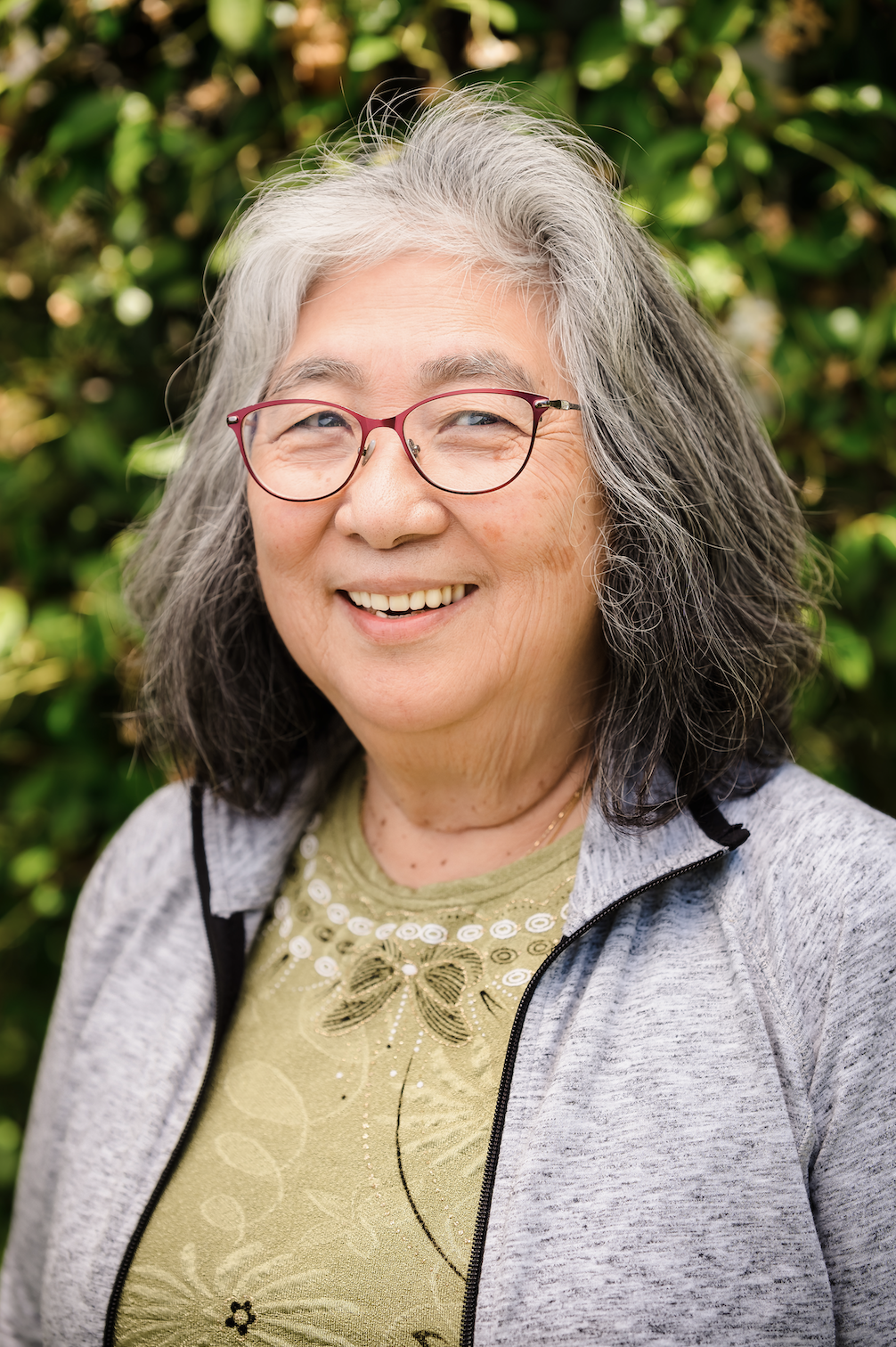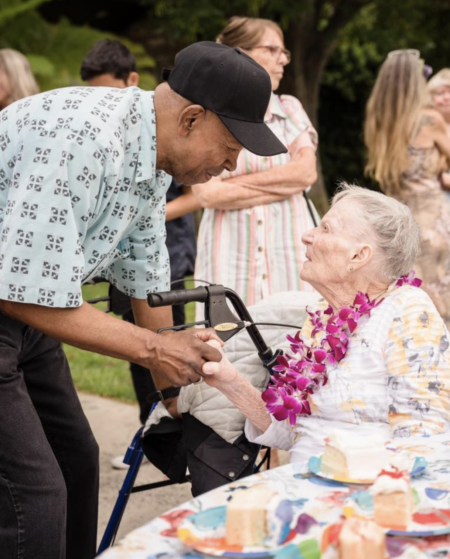Who we are
We are Christians who gather to worship God and to learn more about our Savior, Jesus Christ. We believe that faith is meant to be lived out in community. Community is where we strengthen, nurture, and refine our faith. In community, we are able to discover and develop the unique gifts that God gave each one of us to bless those around us.
What is a Congregational church?
As a Congregational church, we are an autonomous church. We believe Jesus is the head of our church, and we seek to listen for the Holy Spirit among us as we make decisions together. We belong to the National Association of Congregational Christian Churches (NACCC) and to the International Congregational Fellowship (ICF). These associations connect us with other Congregational churches in our region, in the United States and in the world. Each Congregational church operates autonomously while valuing the richness that comes from maintaining relationship beyond the local church.
Our Mission Statement
The mission of First Congregational Church of Anaheim is to develop and to bring together followers of Jesus. As we worship, study and fellowship with one another, we seek to discover and put into practice what it means to follow Jesus in our everyday life. Our goal is to become a community of people transformed by the power of God’s love and to share that love in our families, workplaces, communities and the world.
Our Team
Our team of Pastors and Youth Leaders work together to build life-giving relationships and serve everyone around us in love.
Rev. Dr. Jim Schibsted

Pastor
Rev. Emily Raasch

Associate Pastor
Tyler Robinson

Music Director
Susan Fraker

Office Volunteer
WE TRULY ARE AN EXTENDED CHRISTIAN FAMILY AND WE WELCOME AND INVITE YOU TO JOIN US AND MAKE OUR FAMILY STRONGER.
History
The historic Griffith House was owned by Mr. and Mrs. Griffith. Mrs. Griffith had a rich history with the Congregational church. When the property became a burden for her to maintain, she felt strongly about donating the house to four pastors to establish a Congregational church.
Mrs. Griffith’s grandfather started a Congregational church in Ashtabula, Ohio that served as a station in the underground railroad. The underground railroad was made up of various locations where slaves escaping the south could find safety and shelter on their way to freedom. Mrs. Griffith’s grandparents welcomed escaping slaves and provided them food, safety and shelter in their barn. Mrs. Griffith would sneak food to the barn, and Mr. Griffith had an old two-seated carriage with side curtains he used to transport small groups to the harbor. At the harbor, slaves were able to escape to freedom on boats coming in from Canada.
Mrs. Griffith’s father, Preston B. Plumb, grew up in Ohio as well. He worked for a newspaper in Zenia, Ohio when heated debates about slavery were happening in Kansas (before it was a state). During this time, people from all over the United States came to Kansas to cast their votes. Preston Plumb was so strongly opposed to slavery that he left Ohio when he was eighteen to become a Kansan. He helped found the town of Emporia and from there enlisted in the Army. After the war, Preston Plumb brought his wife to Kansas as well.
Mrs. Griffith was part of the Congregational Church in Emporia, Kansas. The church valued the freedom to think, to speak, and to change. Growing up in the church helped broaden Mrs. Griffith both mentally and spiritually. She valued the freedom she was given to discover and grow in her faith. She came to believe that “freedom imposes responsibility,” which led her to live generously. As an adult, she was known for volunteering in the tubercular ward at the hospital and for bringing food to the homeless.
George D. Griffith married Caroline Southwick Plumb in Emporia, Kansas. In August of 1928 Mr. and Mrs. Griffith and their two sons came to live at 515 Placentia Avenue in Anaheim. It is believed that the Griffith House was built in 1926. As the years passed, Mrs. Griffith was widowed and her sons grew up and married. The time came when the care of the property became a burden. Mrs. Griffith, who had a strong Congregational background, wished to share what she had received. She felt her husband’s spirit was with her in sharing this gift. In 1957, she donated a portion of the property, together with the buildings, for the founding of a Congregational Church. Four other Congregational ministers, who believed in the principles of the free church which she cherished, became the trustees of this gift – deeded, debt-free property. These men – Rev. Perry Schrock (he grew up in the church in Ashtabula that Mrs. Griffith’s grandfather helped to found), the Rev. Harry Butman, the Rev. Niedringhaus, and the Rev. Raymond Waser – held title to the property until the church was fully gathered and incorporated in January of 1959.
Reverend Vernon was chosen to be the first pastor of the Anaheim Community Congregational Church in 1958. His wife, Eleanor, described the family’s arrival at the property to a group gathered in the Griffith House chapel:
“I was struck by its simple beauty and tranquility. It was like an oasis in the desert. Driving up the dirt path from Placentia Avenue, the first thing our daughters spotted was the circular, red brick fish pond with its gold fish and lily pads. The next thing that caught our eye was the big old pepper tree. At its base we could see pulleys, ropes of various sizes, even a ship’s lantern – all evidence of the Griffith boys’ love for sailing. As you stepped into the entryway today, you may have noticed the flooring made of cross-sections of orange tree wood, also the red-tiled flooring in the kitchen and down the long hallway. In Mrs. Griffith’s living room, the heavy cross beams above, giving the illusion of a vaulted ceiling, made this room ideal for use as a chapel.

The home, as well as the auxiliary buildings, were made of adobe – with a red tile roof – so typical of early California. At the time our family moved into the home, we noticed that the casing around every window and door was painted in a strong blue color. When we inquired about this, Mr. Griffith told us that the reason for the blue trim was because, in keeping with old Spanish tradition, the color blue signifies “truth,” and truth would keep the evil spirits from coming in through the windows and the doors.”
On Sunday, March 9, 1958, twelve adults, five children, and one baby gathered in the living room of the Griffith House for the first service. About four months later, 83 people signed their names as Charter Members of the Anaheim Community Congregational Church.
